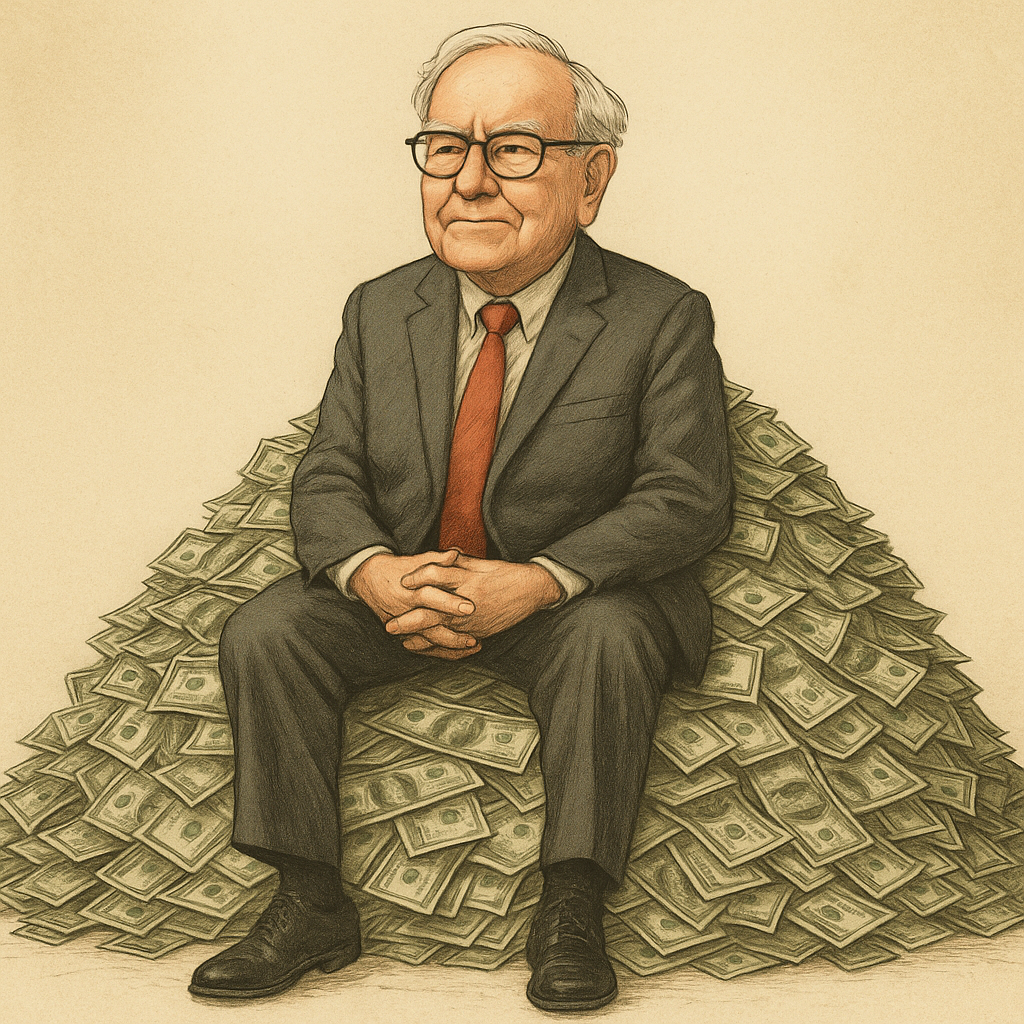Will Warren Buffett Buy Stocks Now?
Berkshire Hathaway is sitting on a huge cash pile, but Buffett is far from ‘out’ of the market. This post breaks down his cash, stock holdings, and wholly owned businesses — and what that means for future buys.

Buffett Waiting Patiently on a Mountain of Cash
Large Cash Hoard & Net Selling Behavior
Berkshire Hathaway is holding a very large cash and near-cash (Treasury bills, etc.) position — on the order of hundreds of billions of dollars. In recent quarters, Berkshire has been a net seller of stocks rather than a buyer, trimming positions in major holdings rather than aggressively opening new ones. This ‘dry powder’ suggests Buffett is cautious and waiting for favorable opportunities. Holding so much cash is often interpreted as a ‘war chest’ ready for deployment when valuations or conditions look compelling.
Buffett Is Never Completely Out of Stocks
Even with that war chest, Berkshire’s earnings power still comes mainly from productive assets, not cash. Wholly owned businesses like BNSF Railway, GEICO, Berkshire Hathaway Energy, Duracell, and Precision Castparts generate steady operating profits. Big equity stakes in Apple, American Express, Coca-Cola, and Bank of America throw off billions in dividends. This means Berkshire stays heavily invested even when new purchases pause. A current snapshot of Berkshire’s estimated valuation split:
- Market Cap (Total): $1,080 billion
- Cash & Treasuries: $344 billion
- Public Equity Stakes: $257 billion
- Wholly Owned Businesses: $478 billion
Roughly one-third of Berkshire’s value is in operating companies, one-quarter in public equities, and the rest in cash/near-cash — showing Buffett is never ‘all cash’.
| Ticker | Company | % of Portfolio | $ (Bn) |
|---|---|---|---|
| AAPL | Apple | 22.3% | $57 |
| AXP | American Express | 18.8% | $48 |
| BAC | Bank of America | 11.1% | $29 |
| KO | Coca-Cola | 11.0% | $28 |
| CVX | Chevron | 6.8% | $17 |
| MCO | Moody’s | 4.8% | $12 |
| OXY | Occidental Petroleum | 4.3% | $11 |
| KHC | Kraft Heinz | 3.3% | $8 |
| CB | Chubb | 3.0% | $8 |
| DVA | DaVita | 1.9% | $5 |
| - | Others | 14.0% | $36 |
Valuation Concerns / Market Overheating
The ‘Buffett Indicator’ (total market cap vs. GDP) is currently ~217%, far above its historical norm, signaling potential overvaluation. Buffett has often emphasized buying only when businesses are attractive relative to their price, so high valuations create a headwind for new large investments unless exceptional opportunities arise.
Buffett’s Philosophy & Past Behavior
Buffett’s style is to buy great businesses at reasonable prices and hold for the long term. He moves slowly, does not time the market aggressively, and is comfortable holding cash until conviction emerges. When he does buy, he looks for durable competitive advantages (‘economic moats’), consistent earnings, capable management, and a margin of safety.
Signals He Might Deploy Some of the Cash
He has selectively increased non-U.S. holdings (like Japanese trading houses) and could add to positions he sees as undervalued. The large cash reserve gives him optionality to act quickly if market stress or dislocations arise. It’s possible he will make opportunistic purchases (or add to existing positions) rather than wholesale new bets across many names.
Conclusion: Will Buffett Buy Stocks Now?
It’s unlikely he’ll go on a broad aggressive buying spree immediately. More likely he’ll make selective, high-conviction purchases when prices are compelling. Importantly, Berkshire is always invested — massive operating businesses plus big equity stakes earn billions in profits and dividends annually, giving it ongoing equity participation even when new purchases pause. In short: Buffett is patient, not absent — waiting for opportunities rather than chasing the market, but with Berkshire still deeply invested in productive assets all the time.
Leave a Comment